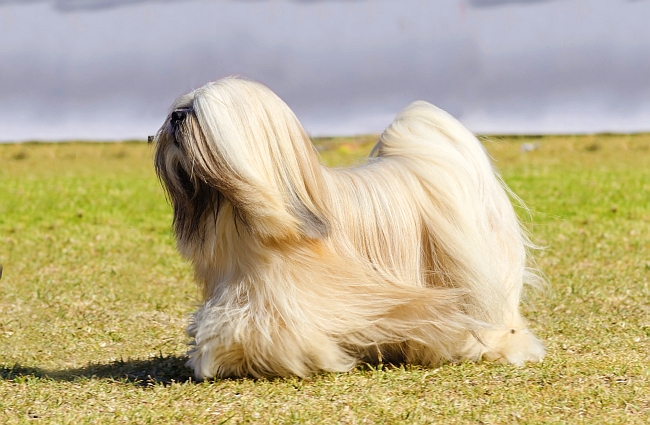
If you have ever read a description of a dog breed and wondered “what does wire-coated look like?” or “what does a double coated mean?” then this list is for you! Here are the primary canine coat texture categories, what they mean and which dog breeds fall under each group.
Short haired: This common kind of coat works well in any climate as the short hair is dense and warm without being uncomfortable in hotter regions. Some short-haired breeds are Labrador Retrievers, Pugs, Rottweilers, or Beagles.
Long-haired: Long-coated dogs have hair longer than an inch or two, and little grooming and trimming, though they do need to be brushed and bathed often. Pups with naturally long coats (if they have not been trimmed down) are: Yorkshire Terriers, Shih Tzus, Lhasa Apsos, and Old English Sheepdogs, etc.)
Double-Coated: Dogs with double coats have a soft silky under coat that insulates their bodies, with a course outer layer of weather-resistant hair. Double coated dogs are German Shepherds, Shelties, Akitas, and Husky breeds.
Combination coat: Combination coats are those that may be longer or thicker in some areas and shorter in others. For example, a dog with a combination coat might have long fur on his back and tail, while the face and stomach are trim. Combination fur pups are Golden Retrievers, Border Collies, Brittany dogs, or Tibetan Spaniels; and these dogs generally shed with the changing seasons.
Heavy-Coated: A heavy coat could either be long or short, while being thick and silky to the touch. The base of the hair strands tend to be wavy, making the consistency thicker by the base of the coat. Newfoundlands, Chow Chows and Pekingese dogs all have heavy (and in some cases also double-coated) fur.
Smooth-Coated: These coats are soft, odor-free and close to the body. They can be soft and shiny when well maintained. Dog breeds with smooth coats are: Boxers, French Bulldogs, Boston Terriers, Whippets, Pointers, etc.
Silky-Coated: Silky coated breeds have fine hair that may be long in some areas, shorter in others, or trimmed down to a soft, short cut. The hair may be straight or lightly wavy, and the coat lays slick and flat. This kind of fur requires brushing and regular bathing to avoid tangling and knots. Some silky-coated breeds are Cocker Spaniels, Cavalier King Charles Spaniels , and Setter breeds, etc.
Wavy Coated: These dogs are often described as “bushy” or “wooly” since their crispy coats are wavy and thick. Dogs such as Poodles, Bichon Frises, and Irish Water Spaniels need to be brushed often to keep their coats healthy.
Corded: Certain fuzzy dog breeds develop an adult coat when they are one year old that can twist into dread-lock-shaped cords. Some avoid shampooing these dogs since it can be very time-consuming, and since the soap is tough to rinse out entirely. However, keeping the corded coat clean from dirt, dust, grime and natural elements is very important to maintaining a dog’s physical appearance and health. When they are washed, the coat should not be brushed, but rather combed through by hand, and twisted or corded. They require natural drying (without rubbing or padding), or by allowing them to sit in front of a cool fan. Corded dogs are Komondors, Pulis, and Spanish Water Dogs among others.
Wire-Coated: Dogs with wire-coats are double-coated, having a fuzzy soft layer of fur by their scalp, with another layer of thicker wavy fir on top. The top layer can look “wavy” or “piece-y” and it spreads across the face, ears, body, legs, tail and belly. Wire-coated dogs are many terriers, all sizes of the Schnauzer, Wire-haired Dachshunds, and Irish Wolfhounds.

